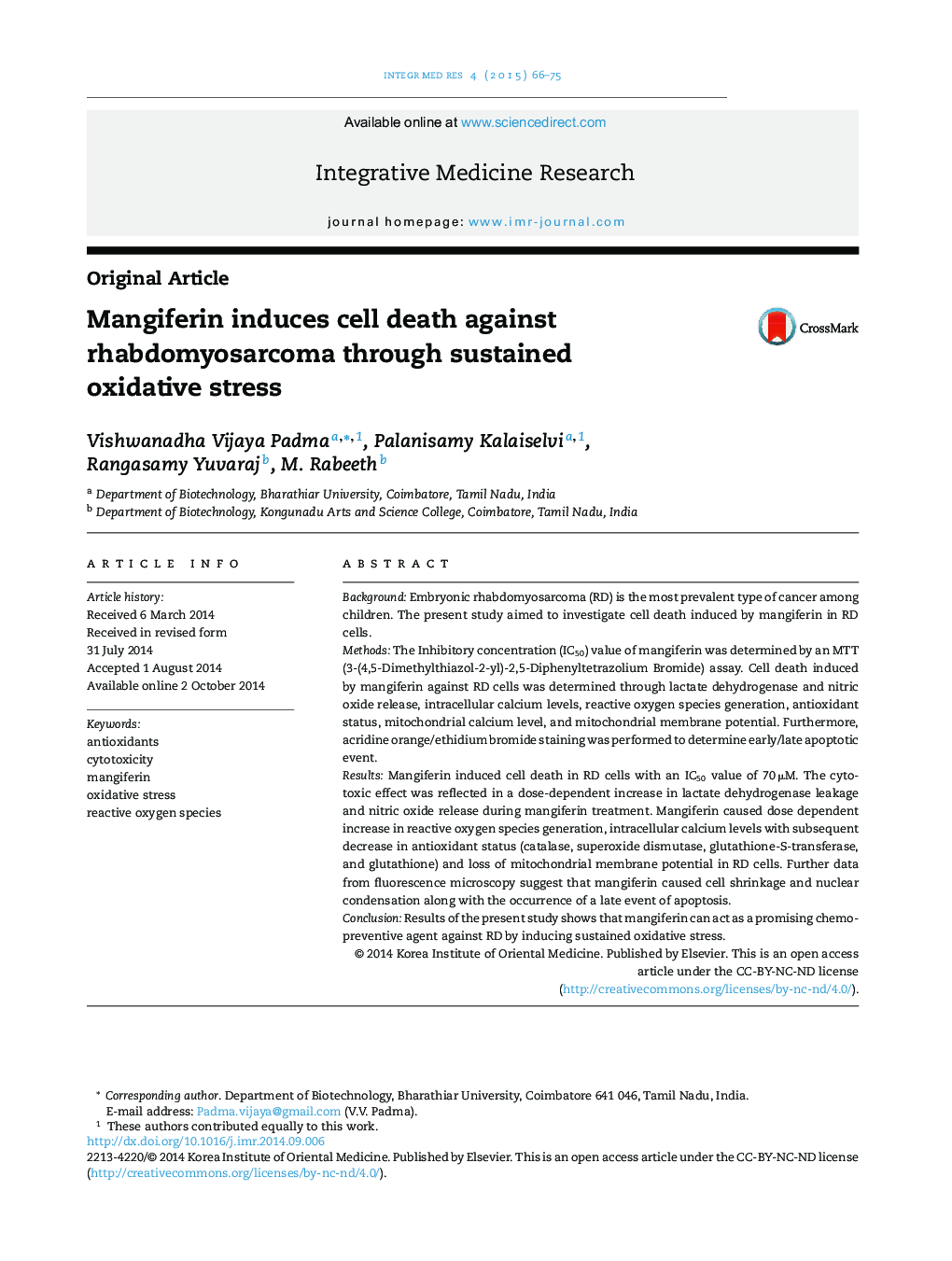| Article ID | Journal | Published Year | Pages | File Type |
|---|---|---|---|---|
| 3098197 | Integrative Medicine Research | 2015 | 10 Pages |
BackgroundEmbryonic rhabdomyosarcoma (RD) is the most prevalent type of cancer among children. The present study aimed to investigate cell death induced by mangiferin in RD cells.MethodsThe Inhibitory concentration (IC50) value of mangiferin was determined by an MTT (3-(4,5-Dimethylthiazol-2-yl)-2,5-Diphenyltetrazolium Bromide) assay. Cell death induced by mangiferin against RD cells was determined through lactate dehydrogenase and nitric oxide release, intracellular calcium levels, reactive oxygen species generation, antioxidant status, mitochondrial calcium level, and mitochondrial membrane potential. Furthermore, acridine orange/ethidium bromide staining was performed to determine early/late apoptotic event.ResultsMangiferin induced cell death in RD cells with an IC50 value of 70 μM. The cytotoxic effect was reflected in a dose-dependent increase in lactate dehydrogenase leakage and nitric oxide release during mangiferin treatment. Mangiferin caused dose dependent increase in reactive oxygen species generation, intracellular calcium levels with subsequent decrease in antioxidant status (catalase, superoxide dismutase, glutathione-S-transferase, and glutathione) and loss of mitochondrial membrane potential in RD cells. Further data from fluorescence microscopy suggest that mangiferin caused cell shrinkage and nuclear condensation along with the occurrence of a late event of apoptosis.ConclusionResults of the present study shows that mangiferin can act as a promising chemopreventive agent against RD by inducing sustained oxidative stress.
